SEO and user experience go hand-in-hand to build an impactful website.
User experience makes a website easy-to-use and SEO makes a website easy-to-find online. The two go hand-in-hand like the yin and yang.
We explore how SEO and user experience affect each other on your website.
Why is user experience important for SEO?
You can do all the work in the world to grow your website traffic, but if your website is poorly designed and navigating it is a miserable experience, you’ll never be able to retain the traffic and most importantly, convert it. All those hours and dollars spent on SEO will go down the drain.
User experience helps retain the traffic and maintain the positionings that SEO built.
And that’s not just our professional opinion. It’s also backed up by Google.
User experience is literally a part of SEO. It is built into Google’s algorithm and the third most important ranking factor.
The original ranking factor is called RankBrain and came out in 2015, and the most recent is called Core Web Vitals and it will come out in 2021.
RankBrain
RankBrain is designed to understand keywords and measure user satisfaction. The latter is what we want to focus on. It is directly related to UX.
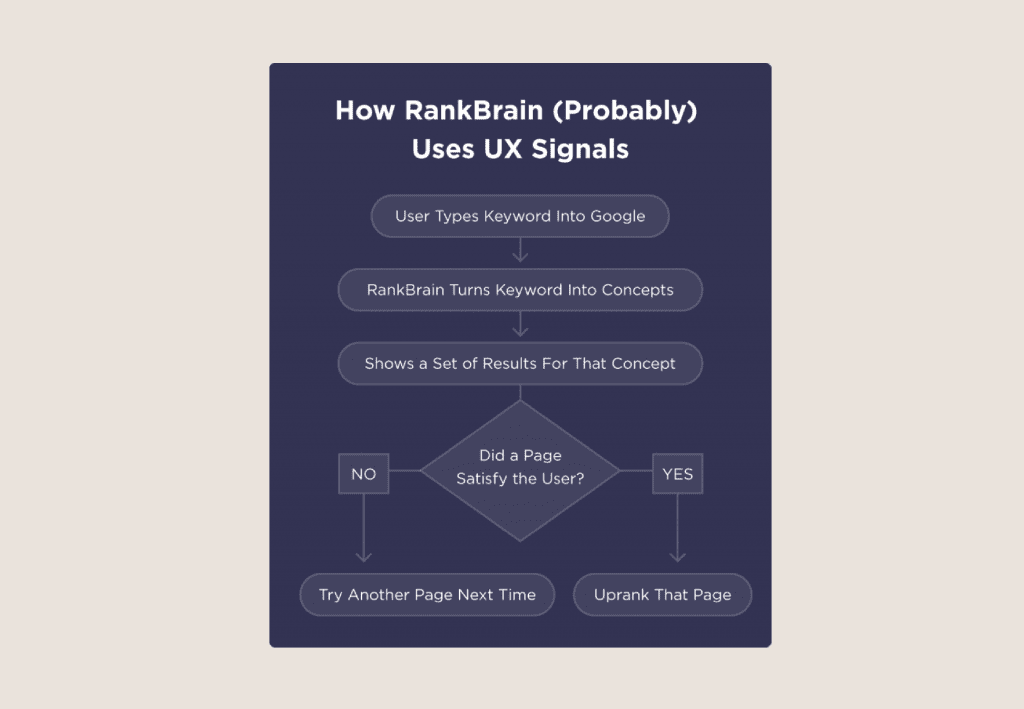
Rank Brain is designed to pay close attention to how users interact with the search results. How many users click the search results? How much time do they spend on a website before they go back to the search results page? Are users jumping from one website to another?
It measures UX signals like…
- Dwell time
- Bounce rate
- Organic click-through rate
- Pogo sticking
- User intent
In other words, RankBrain measures the initial user experience and the user’s first impression.
Core Web Vitals
In May 2020, Google announced Core Web Vitals, a group of metrics that will put more emphasis on overall page experience starting in 2021.
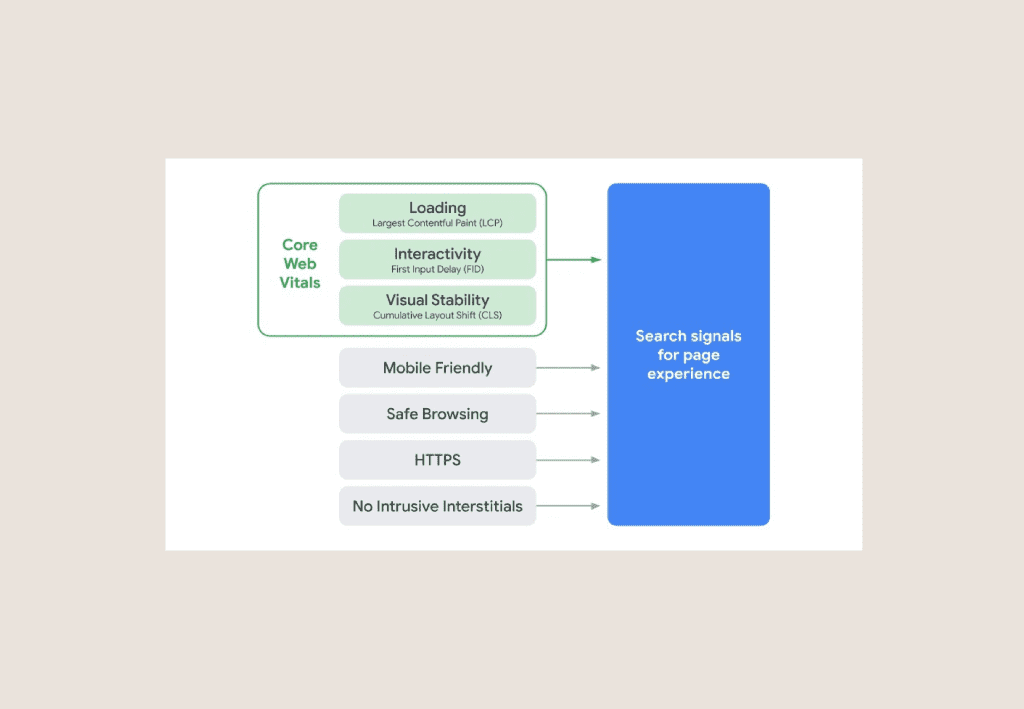
Google defines a great page experience as one that “enables people to get more done and engage more deeply.” Google is putting an increasing importance on hyper-accessible, visually intuitive and fast loading information.
A good page experience doesn’t override having great, relevant content.
— Google Webmasters
Although content doesn’t override user experience or design, this goes to show how user experience and SEO affect each other.
How does user experience and SEO affect each other?
User experience and SEO have shared goals. Both UX and SEO want to make the online experience pleasant. The two disciplines aim to make the internet easy to use and to help people solve their problems. A good user experience and good SEO aim to help people go from point A to B seamlessly.
In fact, what improves UX almost always improves SEO.
There are three key areas where UX and SEO intersect.
- Content
- Navigation
- Conversion
Let’s take a deep dive into each one.
Content Affects User Experience and SEO
It takes users 0.05 seconds to form an opinion about your website. More often than not they form an opinion based on the content they initially see.
UX and SEO friendly content starts with your search engine results listing. RankBrain measures this based on user intent and organic click-through-rate.
Is there a strong connection between your user’s search query and your content? When you are researching and choosing keywords, are you taking the user search intent into consideration?
When you are writing headlines and content, are you appealing to and solving a user’s problems? Doing so will increase your organic click-through-rate.
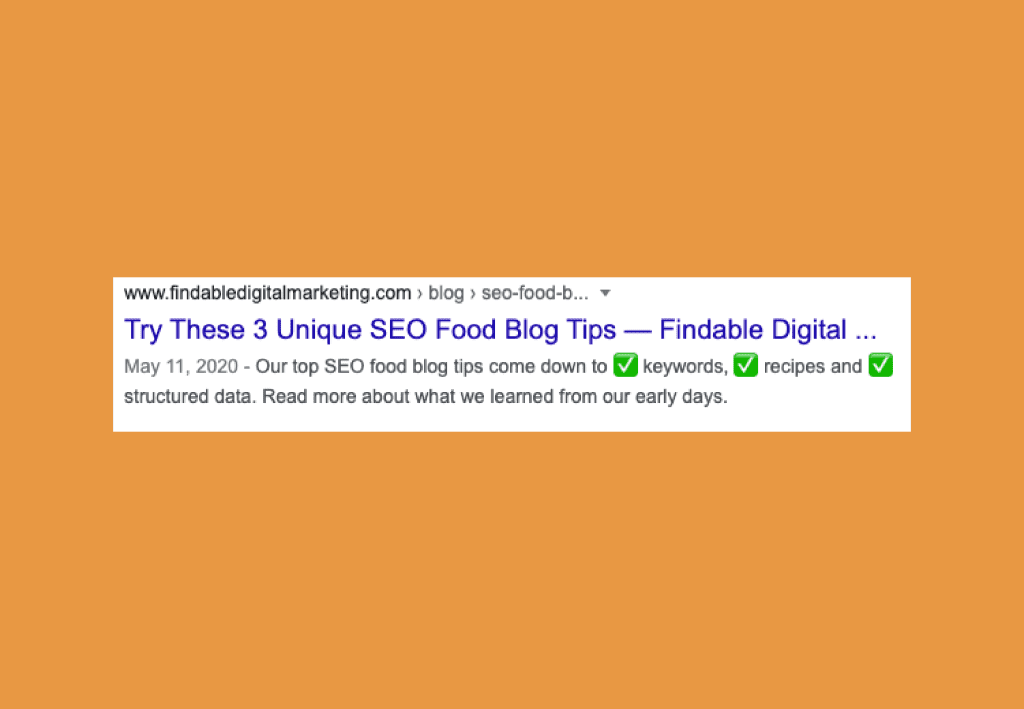
Another example of how content affects the user experience and SEO is the layout and design of the content on your webpages.
RankBrain measures this based on a page’s dwell time. How much time does a user spend on your page before going back to the search engine results page? Giving users the information they are looking for quickly and visually with increase their dwell time.
Our favourite example of SEO-friendly content designed with good UX practices is Backlinko. Brian Dean works closely with designers and spends weeks designing a single blog post but, damn, it’s so easy on the eyes.
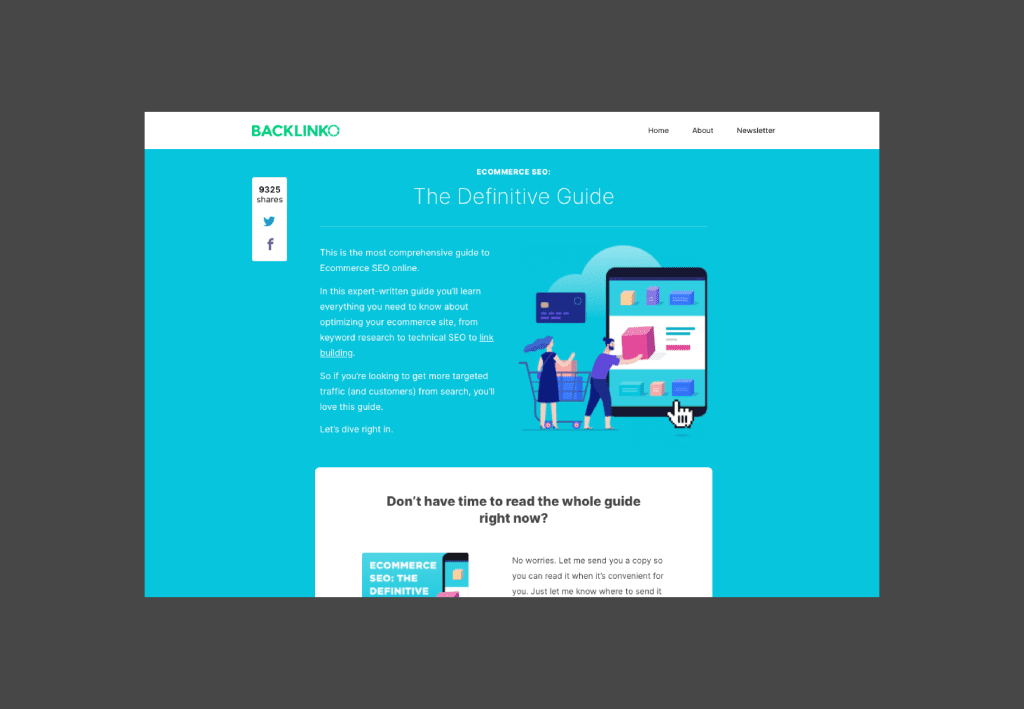
In an email conversation with Steven Redeker from Hayker Solutions, he mentioned if users barely read and if they don’t get the information they are looking for at a quick glance, you can expect them to be on the competitor’s site within 3 seconds.
Navigation Affects User Experience and SEO
So, you’ve attracted new users using keywords and SEO-friendly content. Once they landed on your website, your user experience piqued their interest to stick around a little longer.
How do you encourage users to explore other areas of your website? The answer is having good navigation and flow. Both user experience and SEO work together to do this.
Use links, banners, buttons and boxed elements to create pathways for users to visit other areas of your websites. Customise these pathways on each webpage — for example, suggest similar more of the same content.
Having a sound website architecture also strengthens the navigation experience. Websites should emulate a family tree. There should be a hierarchy of pages, each one connected to another in some way or another. Ideally, the hierarchy should be flat with no more than 3 levels.
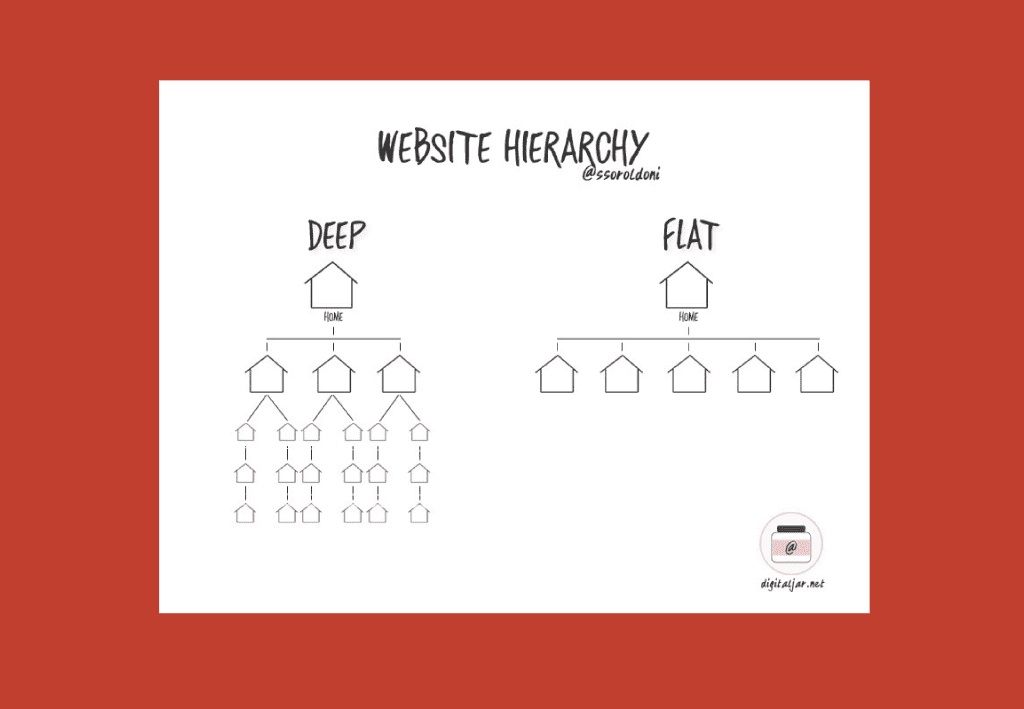
In SEO, this is called internal linking and crawlability. In UX, this is called accessibility, findability and usefulness (according to Peter Morville’s User Experience Honeycomb).
See how UX and SEO are intertwined?
Conversion Affects User Experience and SEO
No one wants their website visitors to be just lurkers. We all want our visitors to engage with our website.
In other words, we want visitors to convert.
Conversion looks different for every website. It depends on what your goals are.
For e-commerce, a conversion is a sale.
For service-based businesses, a conversion could be completing a form. Either a contact form or email newsletter form.
More often than not, what’s keeping your website away from seeing more conversions is a user experience that is not designed for convenience.
Strategic keyword research and SEO-friendly content can attract users that searching content with the intent of making a transaction. Meanwhile, creative user experience tactics can persuade users to act.
Here’s an example.
Both ASOS and Amazon have highly search engine optimized websites. Their product pages are very SEO friendly and effective at generating traffic from buyers.
Then they use UX to close the sale very quickly.
ASOS puts a time limit on products and reserving cart items for a maximum of 60 minutes. A deadline like this pressures customers to move forward with the purchase.
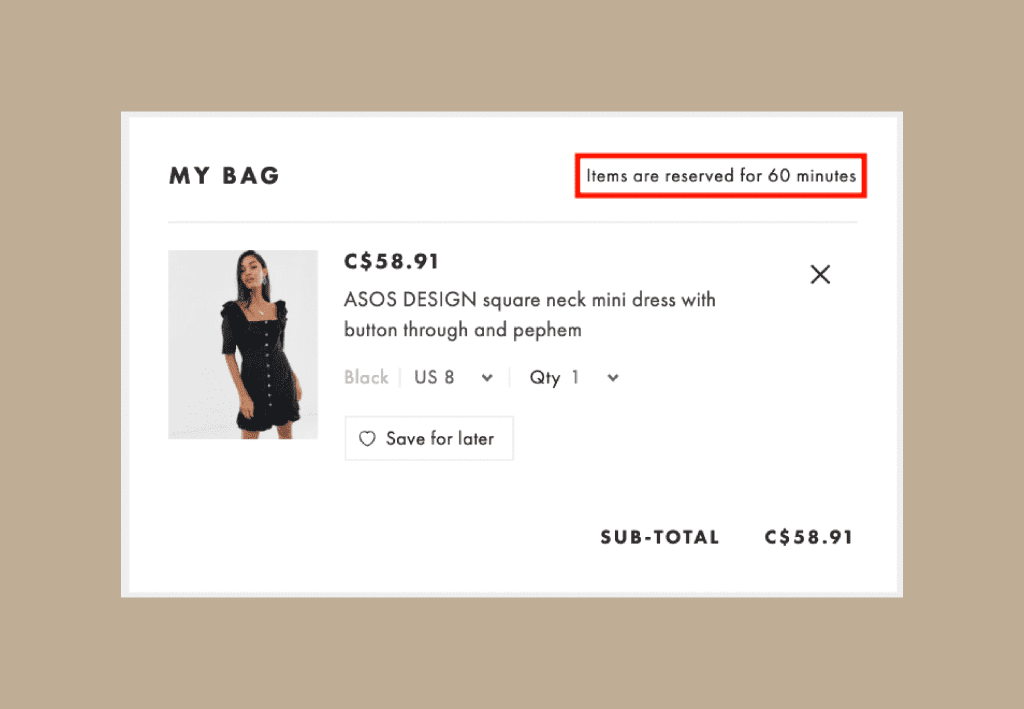
Amazon makes purchasing easy and convenient with its 1-Click payment button.
SEO draws in users on the verge of converting and UX gives them that push.
What are user experience and SEO tools?
As UI/UX Designer Jéssica Eloytza de Assis explains, users don’t always use your website as you planned and you are bound to be surprised. She suggests putting aside at least an hour a month to analyze your website using UX and SEO tools.
Check out the Behaviour Flow Report in Google Analytics to see a breakdown of the flow of your traffic along with all its nodes, connections, and exits.
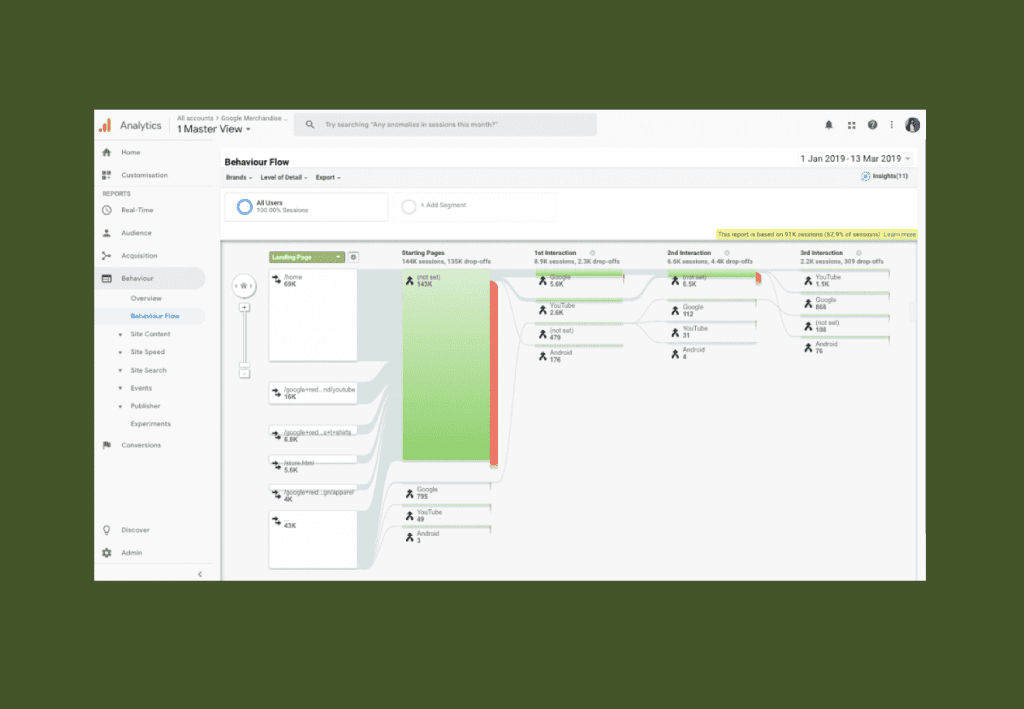
Pay close attention to where people spend the most time, where they leave, and if they seem to find information quickly or if they bounce back and forth pages often. Also, study how the navigation experience differs between devices.
User behaviour softwares are really neat and worth trying out. Tools like Loom, Fullstory, Usertesting or Inspectlet video record website visitors using your website.
Heatmaps like CrazyEgg and HotJar are another tool that will display how users navigate your website. The difference is that the data is presented in a much more visual manner. The warmer colour over a specific area, the more users have hovered over it or clicked it.
When it comes to analyzing and optimizing conversions, here are our favourite UX and SEO tools:
- The Conversion Report in Google Analytics.
- A/B testing tools like Optimizely, Content Experiments with Google Analytics, Convert and VWO: Visual Website Optimizer.
Form analyzers like Google Tag Manager, Hotjar, Formisimo or Zuko.
Which is more important — user experience or SEO?
UX focuses on pleasing humans and SEO focuses on pleasing search engines.
So, which one is more important? User experience or SEO? Which one should come first?
Some argue that search engines aren’t your customers, humans are and thus it’s important to focus on UX first then SEO.
We agree and disagree with that opinion.
Yes, designing for humans should always be top of mind. However humans are using search engines, and if websites aren’t designed for search engines, humans will have a harder time finding you.
They go hand-in-hand. There are stages in a project that one is more important than another, but at no point should one be completely ignored.
You should focus more on UX tends when you first build a page or website but SEO should be considered when designing the website architecture, researching keywords, and mapping out the content.
When a website is all tuned up and ready to multiply its traffic, that’s when you should really focus on SEO and when UX should be pushed to the sidelines — but not ignored.
We don’t recommend focusing on user experience instead of SEO. Instead, we recommend working on the two of them simultaneously.
Our advice is to put together a multidisciplinary team so that both UX and SEO are always taken into consideration throughout any project.





Super well written, and love how practical it is with tools for each step! Well done!
This is great Daniela! Covers a lot of points that most website owners really miss or don’t understand the value of.
Daniela, thanks for covering this! I think I’ll find this useful as I continue to grow my business and site. It’s incredibly thorough. Thank you!
Thank you a million Dalia for your help! It was invaluable to make this guide practical.
Hi Sayeh,
Exactly! As Jessica pointed out, users almost always use our websites differently than how we expect and as website owners, we have to keep that in mind.
Hi Christal,
I just checked out your website The Superghoul and I LOVE it! I love the design. It immediately makes me feel like I’m in a coven and not many blogs nowadays are so personalized. Of all the tools, I think you will really like Usertesting and Hotjar to see how people are using your website.